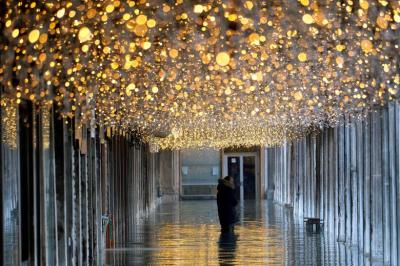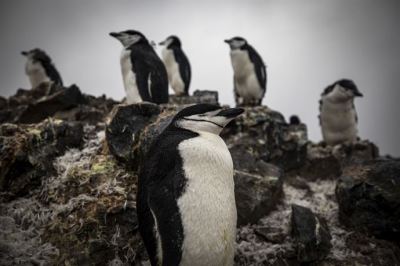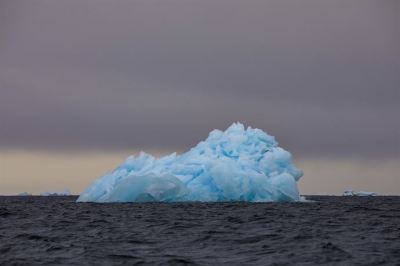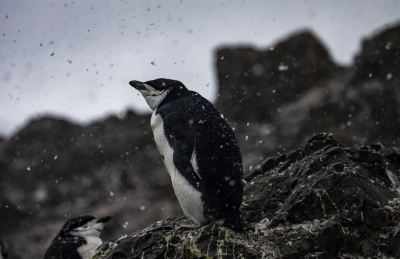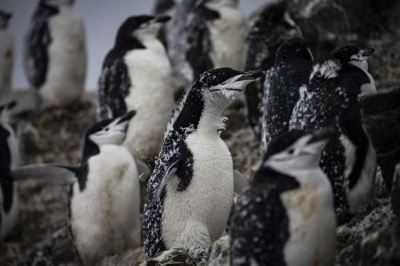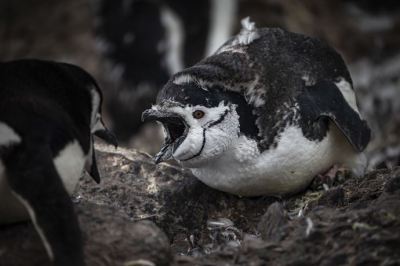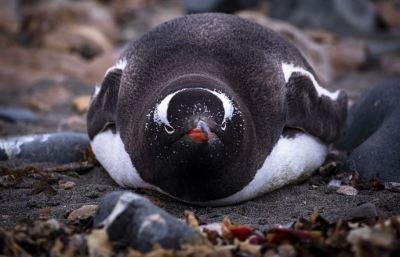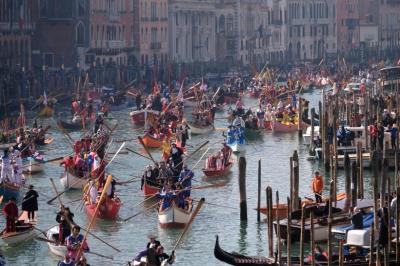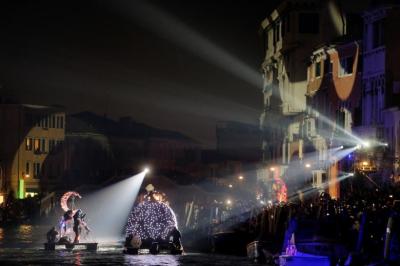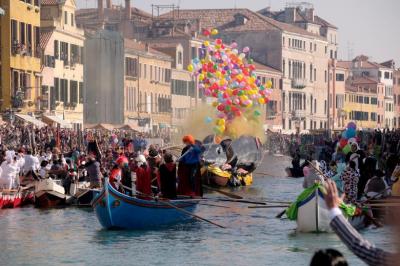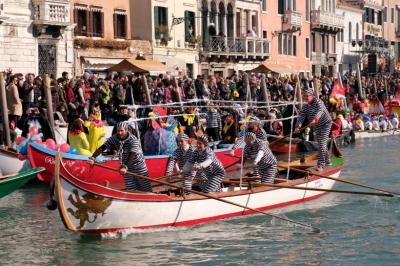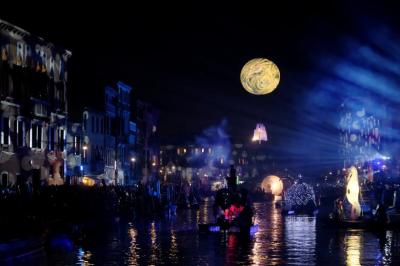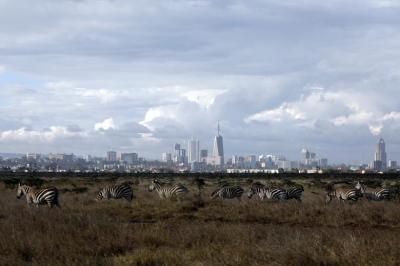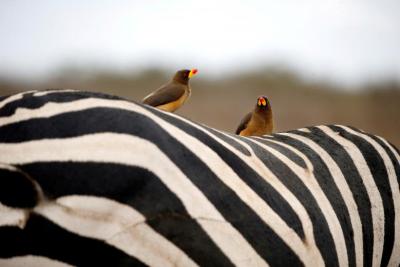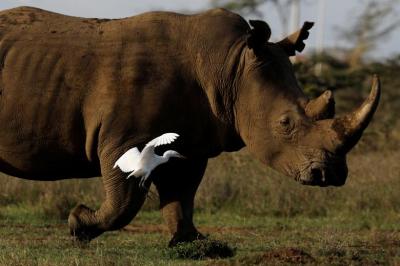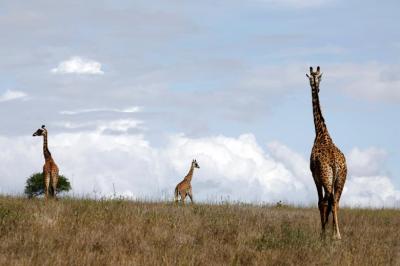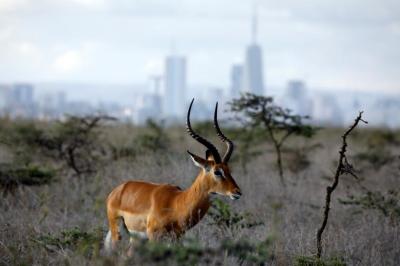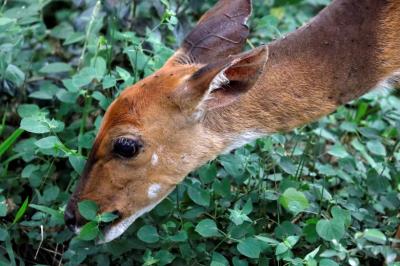Venice is flooded by high tides during the holidays, just a month after the Italian city suffered its worst week of flooding since records began in 1872. One month after Venice endured devastating high tides, The Associated Press reported on Monday that the Italian city is again facing exceptionally high-water levels. Toto Bergamo Rossi, director of the cultural foundation Venetian Heritage, called it “a prolonged emergency.” For many, many tourists who themselves often inundate the city, the flooding has provoked a more immediate question: Can we still go to Venice? The short answer is yes, even though some travelers appear to be worried: In November, Venice hotels reported a 35 percent cancellation rate, according to a local association, putting a dent into what is a €3 billion (about $3.3 billion) a year industry.
Category Travel
Antarctica : The White Continent
Antarctica, the world’s fifth largest continent, with an area of 14 million square kilometers, is located in the southernmost part of the southern hemisphere. The 98 percent of the continent is covered with ice with an average thickness of 1.6 kilometers, contains 67 percent of the freshwater source on the Earth. The untouched nature of Antarctica is of great importance for our future of the world. Antarctica, which has no indigenous people, is home to penguins, seals, whales, birds and various animals.
A brief history of Carnival in Venice
The Carnival of Venice is an annual festival held in Venice, Veneto, Italy. The festival is world-famous for its elaborate masks.
It’s said that the Carnival of Venice was started from a victory of the Republic of Venice against the Patriarch of Aquileia, Ulrico di Treven in the year 1162. In the honour of this victory, the people started to dance and gather in San Marco Square. Apparently, this festival started on that period and became official in the Renaissance. In the seventeenth century, the baroque carnival was a way to save the prestigious image of Venice in the world. It was very famous during the eighteenth century. It encouraged licence and pleasure, but it was also used to protect Venetians from present and future anguish. However, under the rule of the Holy Roman Emperor and later Emperor of Austria, Francis II, the festival was outlawed entirely in 1797 and the use of masks became strictly forbidden. It reappeared gradually in the nineteenth century, but only for short periods and above all for private feasts, where it became an occasion for artistic creations.
After a long absence, the Carnival returned in 1979. The Government decided to bring back the history and culture of Venice, and sought to use the traditional Carnival as the centerpiece of its efforts. The redevelopment of the masks began as the pursuit of some Venetian college students for the tourist trade. Since then, approximately 3 million visitors come to Venice every year for the Carnival. One of the most important events is the contest for la maschera più bella (“the most beautiful mask”) which is judged by a panel of international costume and fashion designers. Here are the winners:
2015 : Le stelle dell’amore by Horst Raack, best costume for the official theme La regina della cucina veneziana by Tanja Schulz-Hess, most creative costume Monsieur Sofa et Madame Coco by Lorenzo Marconi
2014 : Una giornata in campagna by Horst Raack, and Radice Madre by Maria Roan di Villavera
2013 : Alla Ricerca del Tempo Perduto by Anna Marconi, most colourful costume Luna Park
2012 : Il servizio da thè del settecento (teatime) by Horst Raack, most creative costume Oceano by Jacqueline Spieweg
2011 : La famille Fabergé by Horst Raack, and Ommagio a Venezia by Paolo and Cinzia Pagliasso and Anna Rotonai, best costume for the official theme 19th century by Lea Luongsoredju and Roudi Verbaanderd
2010 : Pantegane from England
2009 : The voyagers of Marco Polo by Horst Raack and Tanja Schulz-Hess
2008 : Luna park by Tanja Schulz-Hess
2007 : La Montgolfiera by Tanja Schulz-Hess
Masks have always been an important feature of the Venetian carnival. Traditionally people were allowed to wear them between the festival of Santo Stefano (St. Stephen’s Day, December 26) and the end of the carnival season at midnight of Shrove Tuesday. As masks were also allowed on Ascension and from October 5 to Christmas, people could spend a large portion of the year in disguise. Maskmakers (mascherari) enjoyed a special position in society, with their own laws and their own guild. Venetian masks can be made of leather, porcelain or using the original glass technique. The original masks were rather simple in design, decoration, and often had a symbolic and practical function. Nowadays, most Italian masks are made with the application of gesso and gold leaf and are hand-painted using natural feathers and gems to decorate. However, this makes them rather expensive when compared to the widespread, low-quality masks produced mainly by American factories. This competition accelerates the decline of this historical craftsmanship peculiar to the city of Venice.
Inside Nairobi National Park
Nairobi National Park is a national park in Kenya. Established in 1946, the national park was Kenya’s first. It is located approximately 7 kilometres (4 mi) south of the centre of Nairobi, Kenya’s capital city, with an electric fence separating the park’s wildlife from the metropolis. Nairobi’s skyscrapers can be seen from the park. The proximity of urban and natural environments has caused conflicts between the animals and local people and threatens animals’ migration routes. Still, despite its proximity to civilisation and relative small size for an African national park, Nairobi National Park boasts a large and varied wildlife population. Migrating herbivores gather in the park during the dry season, and it is one of Kenya’s most successful rhinoceros sanctuaries.
Colonists arrived in the area where the park is in the late 19th century. At this time, the Athi plains east and south of what is today Nairobi had plentiful wildlife. Nomadic Maasai lived and herded their cattle among the wildlife. Kikuyu people farmed the forested highlands above Nairobi. As Nairobi grew—it had 14,000 residents by 1910—conflicts between humans and animals increased. Residents of the city carried guns at night to protect against lions. People complained that giraffes and zebras walked on and ruined their flower beds. Animals were gradually confined to the expansive plains to the west and south of Nairobi, and the colonial government set this area aside as a game reserve. Settlers from Nairobi including Isak Dinesen, author of Out of Africa, rode horses among gazelles, impala, and zebras in this reserve
The conservationist Mervyn Cowie was born in Nairobi. Returning to Kenya after a nine-year absence in 1932, he was alarmed to see that the amount of game animals on the Athi plains had dwindled. Expanding farms and livestock had taken the place of the game. He later recalled this place as a paradise that was quickly disappearing. At this time, the area that would later become Nairobi National Park was part of the Southern Game Reserve. Hunting was not permitted in the reserve, but nearly every other activity, including cattle grazing, dumping, and even bombing by the Royal Air Force was allowed. Cowie started to campaign for the establishment of a national park system in Kenya. The government formed a committee to examine the matter.
Officially opened in 1946, Nairobi National Park was the first national park established in Kenya. Maasai pastoralists were removed from their lands when the park was created. Cowie was named as director of Nairobi National Park and held this position until 1966. In 1989, Kenyan President Daniel arap Moi burned twelve tons of ivory on a site within the park. This event improved Kenya’s conservation and wildlife protection image.
The park covers an area of 117.21 square kilometres (28,963 acres) and is small in comparison to most of Africa’s national parks. The park’s altitude ranges between 1,533 and 1,760 metres (5,030 and 5,774 ft). It has a dry climate. The park is the only protected part of the Athi-Kapiti ecosystem, making up less than 10% of this ecosystem. The park has a diverse range of habitats and species. The park is located about 7 kilometres (4 mi) from the Nairobi’s centre. There is electric fencing around the park’s northern, eastern, and western boundaries. Its southern boundary is formed by the Mbagathi River. This boundary is not fenced and is open to the Kitengela Conservation Area (located immediately south of the park) and the Athi-Kapiti plains. There is considerable movement of large ungulate species across this boundary. The fence that separates the park from the city runs along a highway leaving the airport, this is one fact many Kenyans are proud of – this park is the only natural safari park that has a city scape background that can be seen from almost any part of the park, as seen in the picture below of the giraffe and the sky scrapers.
The park’s predominant environment is open grass plain with scattered Acacia bushes. The western uplands of the park have highland dry forest with stands of Olea africana, Croton dichogamus, Brachylaena hutchinsii, and Calodendrum. The lower slopes of these areas are grassland. Themeda, cypress, Digitaria, and Cynodon species are found in these grassland areas. There are also scattered yellow-barked Acacia xanthophloea. There is a riverine forest along the permanent river in the south of the park. There are areas of broken bush and deep rocky valleys and gorges within the park. The species in the valleys are predominantly Acacia and Euphorbia candelabrum. Other tree species include Apodytes dimidiata, Canthium schimperiana, Elaeodendron buchananii, Ficus eriocarpa, Aspilia mossambicensis, Rhus natalensis, and Newtonia species. Several plants that grow on the rocky hillsides are unique to the Nairobi area. These species include Euphorbia brevitorta, Drimia calcarata, and Murdannia clarkeana.
The park has a large and diverse wildlife population. Species found in the park include Cape buffalo, baboon, eastern black rhino, gazelle, Grant’s zebra, cheetah, Coke’s hartebeest, hippopotamus, African leopard, lion, eland, impala, Masai giraffe, ostrich, vultures and waterbuck. Herbivores, including wildebeest and zebra, use the Kitengela conservation area and migration corridor to the south of the park to reach the Athi-Kapiti plains. They disperse over the plains in the wet season and return to the park in the dry season. The concentration of wildlife in the park is greatest in the dry season, when areas outside the park have dried up. Small dams built along the Mbagathi River give the park more water resources than these outside areas. They attract water dependent herbivores during the dry season. The park is the northern limit for wildlife migrations in the dry season. The park has a high diversity of bird species, with up to 500 permanent and migratory species in the park. Dams have created a man-made habitat for birds and aquatic species.


